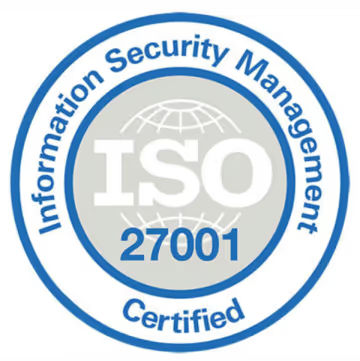Employee Assistance Programs (EAPs) are no longer a “nice-to-have” in the modern workplace, they are essential for building a resilient, healthy, and productive workforce. From addressing personal and professional challenges to improving organizational outcomes, understanding how to use employee assistance program services strategically can be a game-changer for employers globally.
Why Employers Should Leverage EAP Benefits
Investing in an EAP is one of the most cost-effective wellness initiatives an employer can make. These programs are specifically designed to support employee well-being through confidential counseling, crisis intervention, legal and financial advice, and more.
But beyond supporting individual employees, a well-executed EAP creates measurable value for the entire organization.
For instance, the Center for Prevention and Health Services reports that for every $1 invested in EAPs, employers can save between $3 and $10 due to decreased absenteeism, performance improvement, and reduced medical claims [1].
EAPs are also shown to lead to an average of 69.2% improvement in workplace mental health and emotional functioning after use. Here’s how EAPs help:
- Absenteeism reduction: EAPs have been linked to a 33% decrease in days missed at work. Employees are more present and engaged when their mental and emotional health is supported [2].
- Workplace productivity: According to the Journal of Workplace Behavioral Health, employees who use EAP services show a 73% improvement in productivity [3].
- Lower healthcare costs: Mental health-related healthcare claims are significantly reduced when mental health support is addressed proactively through EAPs.
- Employee engagement: When workers feel supported, they are more committed to the organization. This leads to higher retention and overall employee engagement.
In short, knowing how to use EAP benefits wisely means creating a healthier, more efficient workplace that directly affects your bottom line.

How to Set Up and Implement an EAP in the Workplace
Learning how to set up an EAP begins with aligning the program to your organization’s specific needs and culture. Whether you choose an internal or external EAP provider, the implementation process requires thoughtful planning and execution.
- Step 1: Assess Organizational Needs: Conduct surveys, analyze existing wellness data, and hold focus groups. Understanding pain points such as high employee turnover, stress levels, or absenteeism will guide your selection of services.
- Step 2: Select a Qualified EAP Provider: Choose an EAP provider with a solid track record in mental health support, employee counseling, and compliance. Make sure their services align with the size and needs of your workforce.
- Step 3: Design a Customized Program: An off-the-shelf EAP might not meet every organization's needs. Customize offerings like trauma support, work-life services, or legal counseling, and ensure cultural competence.
- Step 4: Integrate with Existing Policies: Ensure the EAP supports other wellness initiatives, such as health insurance plans or DEI programs. Alignment with HR policies fosters seamless program adoption.
- Step 5: Communicate Effectively: Build a robust communication plan that clearly explains who can use employee assistance program services, how to access them, and emphasizes confidentiality.
- Step 6: Monitor and Evaluate: Use EAP success metrics like utilization rates, satisfaction scores, and absenteeism data to measure effectiveness and improve over time.
How Employers Can Encourage Employees to Use EAP Services
High EAP utilization doesn’t happen automatically—it requires intentional effort. In fact, in our specialized blog about EAP statistics and usage rates, we unveil many reasons why EAPs fail, and lack of proper benefit communications is key.
Here are proven strategies to boost participation and normalize the use of these vital services:
- Conduct Awareness Campaigns: Launch regular internal campaigns using email, posters, intranet, and town halls. Include real-life testimonials (anonymized if needed) to humanize the impact.
- Reduce Stigma Around Mental Health: Foster a culture that normalizes asking for help. Promote leadership participation in mental health conversations, reinforcing that using the EAP is a strength, not a weakness.
- Train Managers and Supervisors: Equip frontline leaders to recognize signs of distress and proactively refer employees to the EAP. The sensitivity training provided by Meditopia can train your managers and employees on many mental health aspects for work.
- Integrate into Onboarding and Wellness Programs: Introduce the EAP during new hire orientation and weave it into other wellness initiatives to create multiple touchpoints for awareness.
- Ensure Easy Access and Confidentiality: Use digital platforms or mobile apps provided by your EAP provider to simplify access. Always reinforce confidentiality to address privacy concerns.
By showing your team how to use EAP services without fear or confusion, you remove one of the biggest barriers to employee well-being support.
Common Employer Mistakes When Implementing EAPs
Even with the best intentions, employers can miss the mark when launching an EAP. But hey, this is only human. Let’s check some common mistakes and help you avoid wasted investment and missed opportunities:
- Poor Communication: If employees don't know about the EAP, they won't use it. Build multi-channel communication strategies. Meditopia, for example, has a dedicated Slack channel to communicate employee benefits; it’s accessible for everyone anytime.
- Lack of Follow-Up: Launching the program isn't enough, measure EAP success metrics, gather feedback, and evolve the program accordingly. As EAP Providers, Meditopia supports you on this task by following up your team’s metrics and offering preventive actions.
- Misalignment with Culture: A generic EAP may feel disconnected. Tailor offerings to your workforce's values and demographics (remote teams, language preferences, etc.)
- No Manager Training: Managers often serve as gatekeepers to EAPs. Without training, they may miss signs or offer incorrect information.
- Overlooking Confidentiality: If employees fear that using the EAP will affect their careers, they won’t use it. Emphasize the privacy protections in place.
Avoiding these errors ensures you're not only offering a service but empowering employees to actually use it.
























